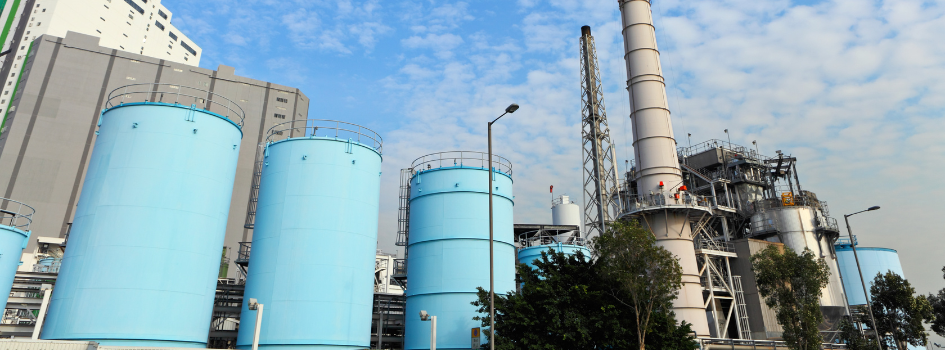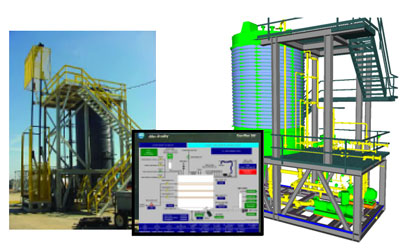
What is Lube Oil Blending?
Lube oil blending is a complex process that involves combining base oils and additives to create lubricants with specific properties and performance characteristics. This process is very important for producing high-quality lubricants that meet the demanding requirements of various industries — from automotive and industrial to marine and aviation.
The Lube Oil Blending Process
The lube oil blending process is a multi-step procedure that requires precision, expertise, and state-of-the-art equipment. The process begins with the selection of base oils, which can be mineral, synthetic, or vegetable-based. The choice of base oil depends on the desired properties of the final product, such as viscosity, thermal stability, and oxidation resistance. Once the base oil is selected, additives are carefully chosen to enhance the lubricant’s characteristics. These additives can include viscosity modifiers, anti-wear agents, corrosion inhibitors, and detergents, among others.
The blending process itself involves mixing the base oils and additives in precise proportions to achieve the desired properties. This is typically done in large blending tanks equipped with agitators to ensure thorough mixing. The blending process is carefully controlled to maintain consistent quality and to ensure that the final product meets the required specifications. After blending, the lubricant is subjected to rigorous quality control tests to verify its properties and performance.
Factors Influencing Lube Oil Blending
Several factors influence the lube oil blending process and the quality of the final product.
- Base oil quality and compatibility
- Additive selection and concentration
- Blending temperature and duration
- Agitation and mixing method
- Quality control and testing
What are Liquid Blending Systems?

Liquid blending systems are advanced equipment designed to streamline and optimize the lube oil blending process. These systems integrate various components, such as tanks, pumps, valves, and control systems, to enable precise and consistent blending of base oils and additives. Liquid blending systems can range from small, batch-type units to large, continuous-flow systems, depending on the scale and complexity of the blending operation.
Benefits
Liquid blending systems offer numerous benefits over traditional manual blending methods. Automated systems can precisely measure and dispense the required quantities of base oils and additives, ensuring a consistent blend. This improved accuracy and consistency is a key advantage of liquid blending systems. In addition to consistency, liquid blending systems can significantly increase efficiency and productivity. These systems can blend larger volumes of lubricants in less time, increasing the overall production capacity and reducing downtime. This increased efficiency translates into cost savings and improved profitability for lubricant manufacturers.
Another important benefit of liquid blending systems is enhanced safety and environmental compliance. Automated systems reduce the risk of human error and exposure to hazardous chemicals, while also minimizing waste and emissions. This not only protects workers but also helps companies meet increasingly stringent environmental regulations.
Liquid blending systems also offer better quality control and traceability compared to manual methods. Integrated sensors and monitoring systems can provide quality control and data logging for traceability and quality assurance. This is particularly important in industries with strict quality requirements, such as aerospace and automotive.
Features
Advanced liquid blending systems incorporate a range of features to optimize the blending process and ensure consistent quality.
- Modular design: Modular systems allow for easy customization and expansion to meet changing production needs.
- Programmable logic controllers (PLCs): PLCs enable precise control and monitoring of the blending process, with the ability to store and recall recipes for different lubricant formulations.
- Automated ingredient handling: Integrated pumps, valves, and metering systems allow for precise and automated dispensing of base oils and additives.
- In-line blending: In-line blending systems enable continuous, high-volume production, with the ability to blend multiple products simultaneously.
Applications
Liquid blending systems are used in a wide range of industries and applications.
- Automotive lubricants: Includes engine oils, transmission fluids, and gear oils for cars, trucks, and heavy-duty vehicles.
- Industrial lubricants: Hydraulic fluids, compressor oils, and bearing oils for machinery and equipment.
- Marine lubricants: Engine oils, cylinder oils, and system oils for ships and offshore platforms.
- Aviation lubricants: Engine oils, hydraulic fluids, and grease for aircraft and helicopters.
- Special lubricants: Food-grade oils, biodegradable lubricants, and high-performance synthetic oils for niche applications.
Discover IFS Liquid Blending Systems
Integrated Flow Solutions (IFS) offers state-of-the-art lube oil blending packages that incorporate the latest technologies and best practices in liquid blending. Our systems are designed to deliver high accuracy, efficiency, and flexibility, enabling lubricant manufacturers to produce high-quality products consistently and cost-effectively.
The IFS lube oil blending package features a modular design that can be easily customized to meet specific production requirements. The system incorporates advanced PLC-based control systems for precise process control and monitoring, as well as integrated quality control and testing capabilities to ensure consistent product quality. The automated ingredient handling and dosing systems enable precise and efficient blending, while the robust construction and easy maintenance access ensure long-term reliability and uptime.
Want to know more? Let’s talk!
